Code
HCS27804
Weight
2.221 Kg / 4.9 lbs
Size
Height
23cm (9") Width
16cm (6") Depth
11cm (4") Material
Copper
Availability
Available

Safe Payment
We accept Paypal, Money Transfer, Bank Transfer
Confidence
Protection covers your purchase and personal data.
Worldwide Delivery
We ship Worldwide, except Russia.Shipping cost US$25.2 for upto 0.5 kgs

Hotline
Talk to help line for your question on 9841267335About Chocolate Oxidized
This Buddhist Statue Of Naga Kanya, [sand Casting], [chocolate Oxidized] has been meticulously treated with a chocolate color antique patina. The intention behind this patina is to replicate the appearance of a copper statue that has gracefully aged over a century. Unlike a simple coat of paint, this patina is not applied superficially and is designed to endure. It undergoes an artificial oxidation process that adds depth and character, while also serving as a protective layer against natural oxidation.
By imitating the natural aging process, the chocolate color antique patina lends an air of authenticity and vintage charm to the Buddhist Statue Of Naga Kanya, [sand Casting], [chocolate Oxidized]. This carefully crafted finish ensures that the patina remains intact for an extended period, offering longevity and resistance to wear. The result is a unique piece that captures the essence of a time-worn copper statue, evoking a sense of history and artistic heritage.
This Buddhist Statue Of Naga Kanya, [sand Casting], [chocolate Oxidized] has been meticulously treated with a chocolate color antique patina. The intention behind this patina is to replicate the appearance of a copper statue that has gracefully aged over a century. Unlike a simple coat of paint, this patina is not applied superficially and is designed to endure. It undergoes an artificial oxidation process that adds depth and character, while also serving as a protective layer against natural oxidation.
By imitating the natural aging process, the chocolate color antique patina lends an air of authenticity and vintage charm to the Buddhist Statue Of Naga Kanya, [sand Casting], [chocolate Oxidized]. This carefully crafted finish ensures that the patina remains intact for an extended period, offering longevity and resistance to wear. The result is a unique piece that captures the essence of a time-worn copper statue, evoking a sense of history and artistic heritage.
Process: Sand Casting
This Buddhist Statue Of Naga Kanya, [sand Casting], [chocolate Oxidized] has been created using the sand casting system, also known as sand molding casting. This widely employed manufacturing process utilizes a sand mold to produce metal products and components in various sizes and shapes. Sand casting holds significant popularity in the industry, accounting for approximately 60% of all metal castings. The sand casting process involves six primary steps. First, a pattern or replica of the desired sculpture, in this case, Buddhist Statue Of Naga Kanya, [sand Casting], [chocolate Oxidized], is created using a material like wood or metal. The pattern is then placed in a flask, which is a box-like structure divided into two halves. The next step involves packing the flask tightly with specially formulated molding sand, creating a mold cavity that matches the shape of the pattern. The pattern is subsequently removed, leaving behind a negative impression of the sculpture within the sand mold. Read More . . .
This Buddhist Statue Of Naga Kanya, [sand Casting], [chocolate Oxidized] has been created using the sand casting system, also known as sand molding casting. This widely employed manufacturing process utilizes a sand mold to produce metal products and components in various sizes and shapes. Sand casting holds significant popularity in the industry, accounting for approximately 60% of all metal castings. The sand casting process involves six primary steps. First, a pattern or replica of the desired sculpture, in this case, Buddhist Statue Of Naga Kanya, [sand Casting], [chocolate Oxidized], is created using a material like wood or metal. The pattern is then placed in a flask, which is a box-like structure divided into two halves. The next step involves packing the flask tightly with specially formulated molding sand, creating a mold cavity that matches the shape of the pattern. The pattern is subsequently removed, leaving behind a negative impression of the sculpture within the sand mold. Read More . . .
Brief Introduction :
Naga Kanya means in Sanskrit the virgin, the maiden of the Nagas. This picture refers to a beautiful Buddhist tale narrated in the XIIth chapter of the Lotus Sutra where a Naga princess, daughter of the Ocean (Sagara) comes to bodhicitta at the tender age of eight. Before an incredulous assembly of bodhisattvas (because she was so young, and a woman), the Nagini offers then to the Buddha a jewel, said to be worth thousands of worlds. When the bodhisattvas tell her that the Buddha accepted her jewel immediately, she told them to watch her become a buddha even more rapidly. The common interpretation of this myth is that her jewel was in truth her very own life, worth indeed thousands of worlds, and the gift of which was the ultimate price, whether it be spontaneous or the work of an entire life.
Iconography :Naga Kanya is usually seen as a very beautiful young girl in sited position, holding precious jewels with her both hand in offering posture, She has 5 headed snake on top of her head as a crown and wings representing she has the ability to fly.


![Buddhist Statue Of Naga Kanya, [sand Casting], [chocolate Oxidized]](https://handicraftseller.com/uploads/pics/product/thumb/2023/01/27804.jpg)
![Buddhist Statue Of Naga Kanya, [sand Casting], [chocolate Oxidized]](https://handicraftseller.com/uploads/pics/product/thumb/2023/01/27804_0.jpg)
![Buddhist Statue Of Naga Kanya, [sand Casting], [chocolate Oxidized]](https://handicraftseller.com/uploads/pics/product/thumb/2023/01/27804_1.jpg)
![Buddhist Statue Of Naga Kanya, [sand Casting], [chocolate Oxidized]](https://handicraftseller.com/uploads/pics/product/thumb/2023/01/27804_2.jpg)

 of Naga Kanya
of Naga Kanya 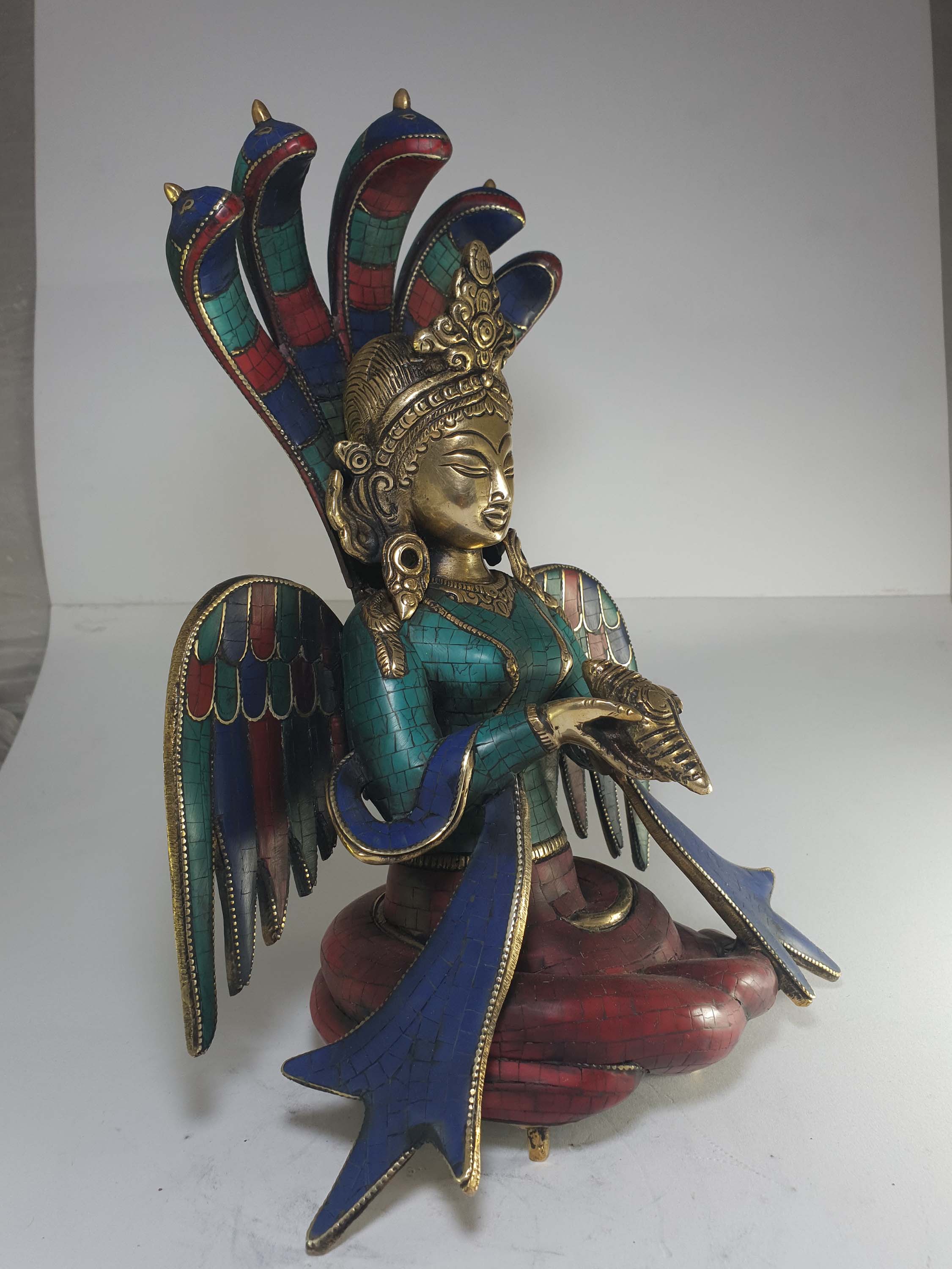 of Naga Kanya
of Naga Kanya  of Naga Kanya
of Naga Kanya 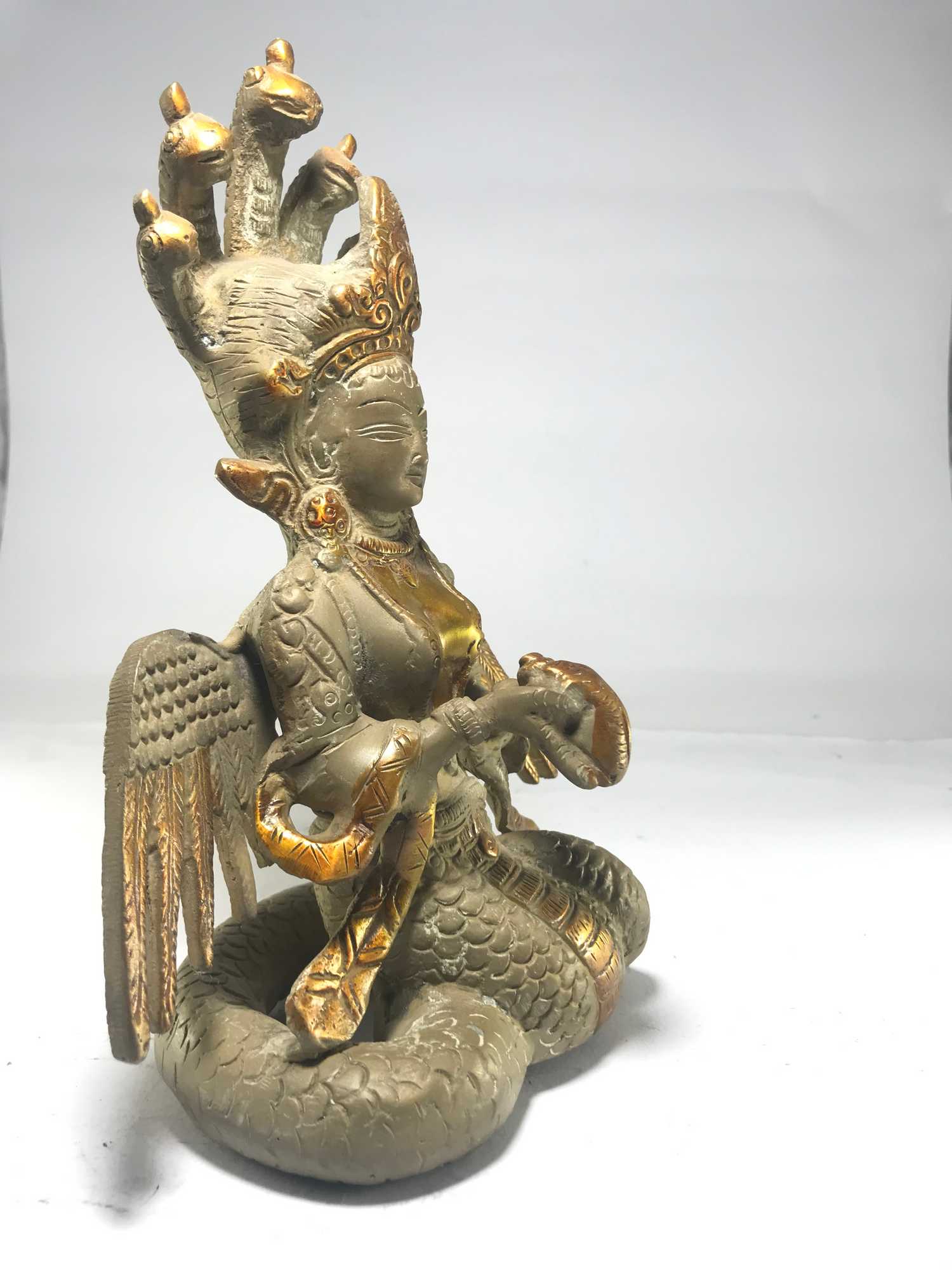 of Naga Kanya
of Naga Kanya 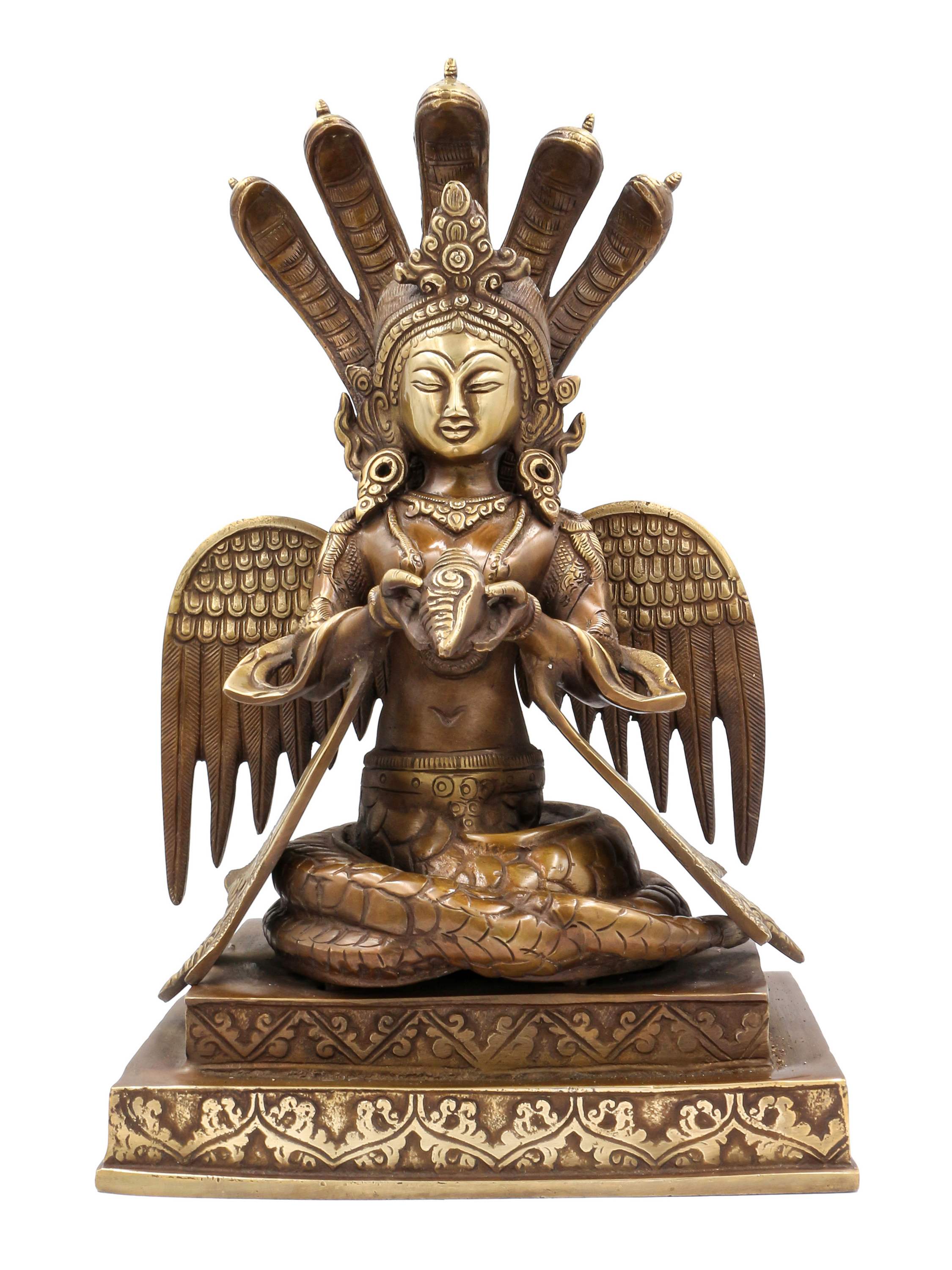 of Naga Kanya,
of Naga Kanya,  of Naga Kanya,
of Naga Kanya,  of Naga Kanya" title="Statue
of Naga Kanya" title="Statue 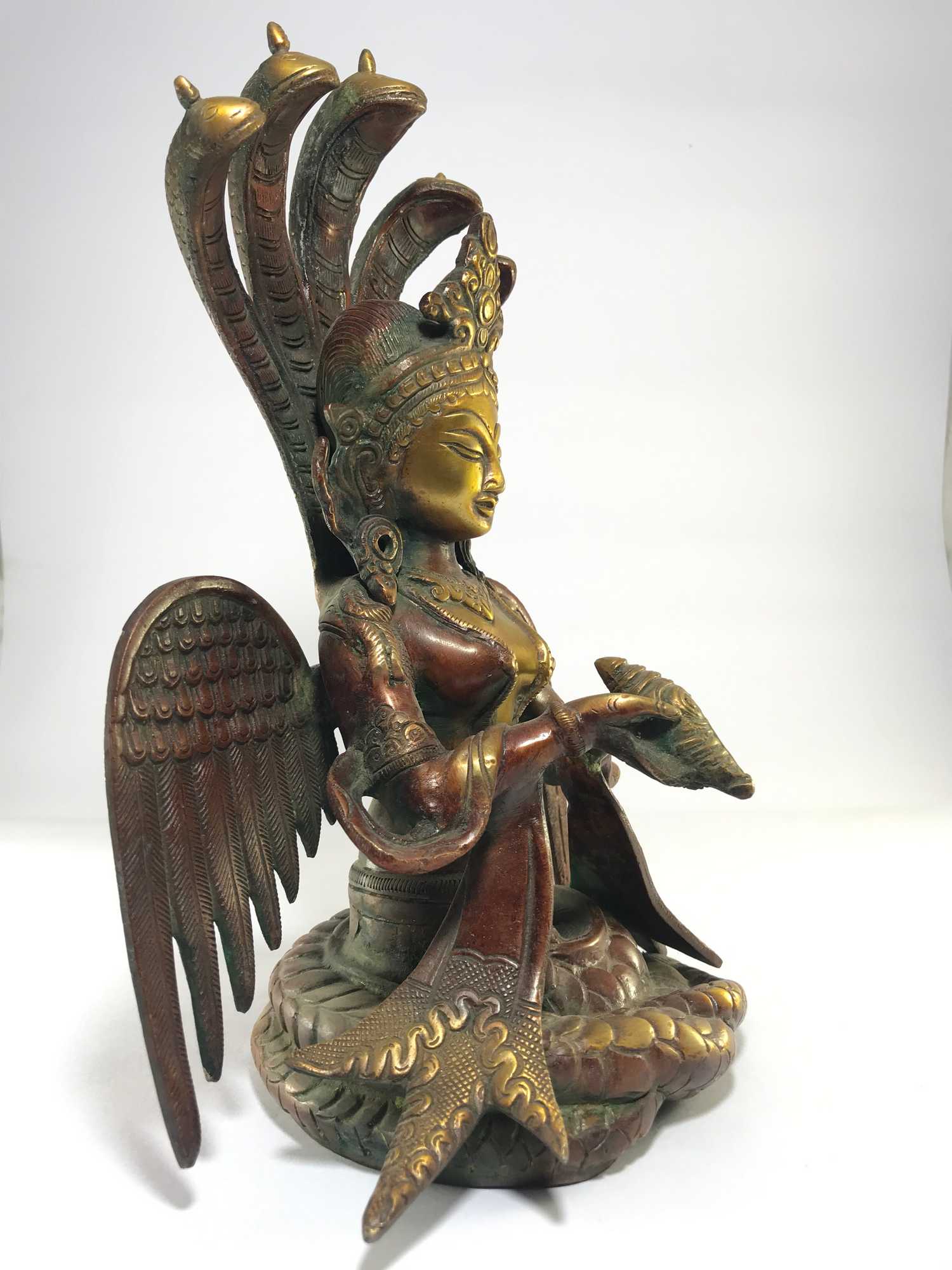 of Naga Kanya" title="Statue
of Naga Kanya" title="Statue  with
with  with
with  of Naga Kanya,
of Naga Kanya, 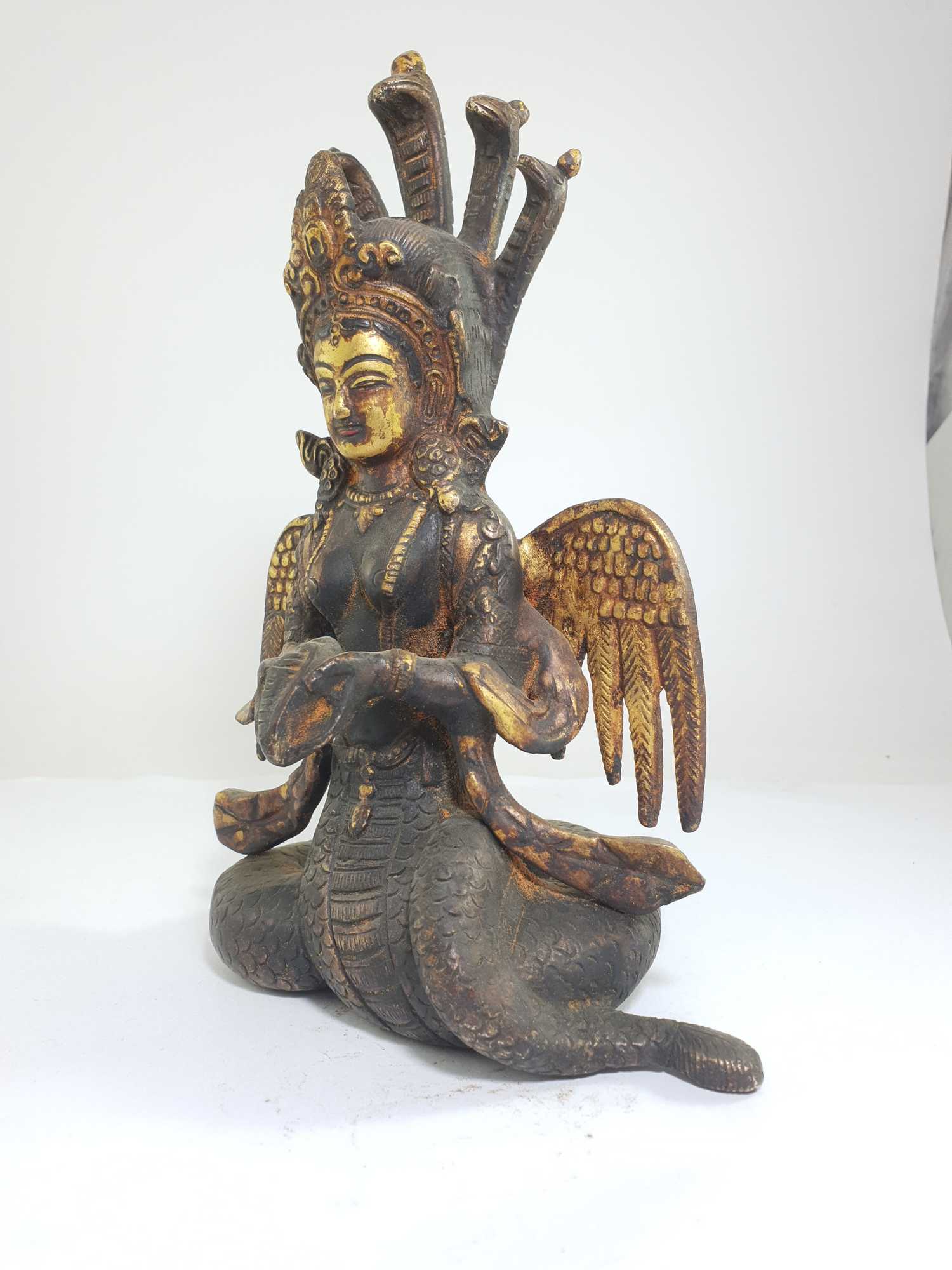 of Naga Kanya,
of Naga Kanya,